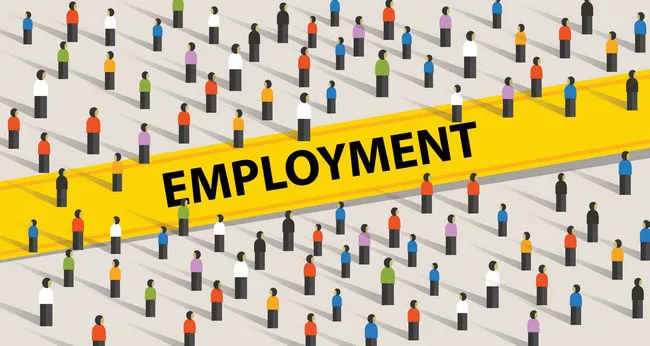Unemployment is a complex phenomenon that affects economies worldwide. Understanding its various forms is crucial for policymakers, economists, and the general public. In this article, we will explore the four main types of unemployment, each with unique causes and implications for the economy.
1. Frictional Unemployment
Frictional unemployment occurs when individuals are temporarily out of work while transitioning from one job to another. This type of unemployment is often short-term and voluntary. It is a natural part of a dynamic labor market where workers seek better opportunities, relocate, or enter the workforce for the first time.
Causes of Frictional Unemployment
Frictional unemployment is primarily caused by the time it takes for workers to find new jobs that match their skills and preferences. This can occur due to personal reasons, such as moving to a new city, or professional reasons, like seeking a higher salary or better working conditions.
Impact on the Economy
While frictional unemployment can be seen as a sign of a healthy economy, as it indicates that workers have the flexibility to seek better employment, it can also lead to a temporary loss of income for individuals. However, it is generally not considered a major concern for policymakers.
2. Structural Unemployment
Structural unemployment arises when there is a mismatch between the skills of the labor force and the demands of the job market. This type of unemployment can be long-term and more challenging to address, as it often requires workers to acquire new skills or education to find employment.
Causes of Structural Unemployment
Structural unemployment is caused by technological advancements, changes in consumer preferences, globalization, and shifts in industries. For example, as automation increases, jobs in manufacturing may decline, leaving workers with outdated skills unemployed.
Impact on the Economy
Structural unemployment can lead to significant economic challenges, as it may result in a portion of the workforce becoming permanently unemployed. This type of unemployment often requires government intervention, such as retraining programs, to help affected workers adapt to the changing job market.
See Also: What Is Unemployment Rate Definition
3. Cyclical Unemployment
Cyclical unemployment occurs due to fluctuations in the business cycle. During economic downturns, such as recessions, demand for goods and services decreases, leading to layoffs and higher unemployment rates. Conversely, during periods of economic expansion, cyclical unemployment tends to decrease.
Causes of Cyclical Unemployment
Cyclical unemployment is primarily driven by a decrease in overall demand in the economy. When consumers and businesses reduce spending, companies may cut back on production, leading to job losses. Economic policies, such as monetary and fiscal measures, are often used to address cyclical unemployment.
Impact on the Economy
Cyclical unemployment can have widespread and severe effects on the economy, leading to reduced consumer spending, lower business profits, and increased government spending on social welfare programs. During prolonged economic downturns, cyclical unemployment can contribute to a deep recession or even a depression.
4. Seasonal Unemployment
Seasonal unemployment occurs when industries experience regular and predictable changes in employment due to seasonal factors. This type of unemployment is temporary and often occurs in industries such as agriculture, tourism, and retail, where demand fluctuates throughout the year.
Causes of Seasonal Unemployment
Seasonal unemployment is caused by the nature of certain industries that rely on specific seasons for their peak activity. For example, agricultural workers may be unemployed during the off-season when crops are not being harvested, or retail workers may face layoffs after the holiday shopping season.
Impact on the Economy
While seasonal unemployment is generally expected and less concerning than other forms of unemployment, it can still create challenges for workers who must find alternative employment during the off-season. Some industries may rely on temporary workers, leading to job insecurity for those affected.
Conclusion
Understanding the four types of unemployment—frictional, structural, cyclical, and seasonal—is essential for addressing the broader issue of unemployment in the economy. Each type has distinct causes and requires different strategies to mitigate its impact. By recognizing these differences, policymakers can develop targeted interventions to reduce unemployment and promote economic stability.

